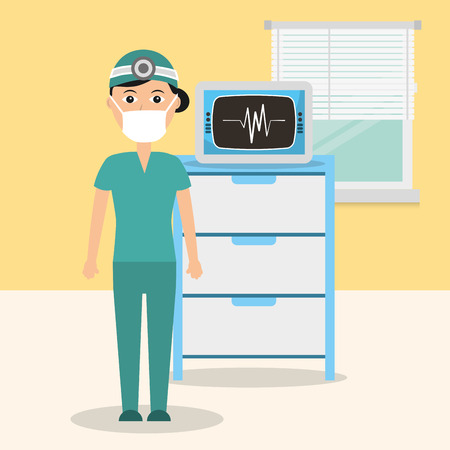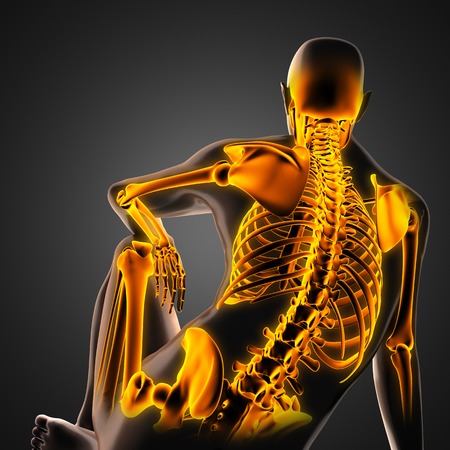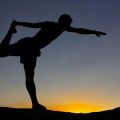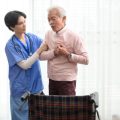1. Introduction to Wearable Technology in Fall Prevention
Falls are a leading cause of injury among older adults in the United States. To help reduce these risks, wearable technology and remote monitoring are becoming increasingly popular. These devices not only track movement but also alert caregivers or family members if a fall occurs. Below is an overview of the most commonly used wearable devices for fall prevention and mobility monitoring in the U.S.
Overview of Common Wearable Devices
Wearable devices come in many forms, each designed to fit comfortably into daily life while providing valuable safety features. Here are some popular options:
| Device Type | Main Features | How It Helps Prevent Falls |
|---|---|---|
| Smartwatches (e.g., Apple Watch, Samsung Galaxy Watch) | Step tracking, heart rate monitoring, automatic fall detection, emergency SOS button | Sends alerts after a detected fall, tracks activity trends to spot changes in mobility |
| Sensor-Equipped Insoles | Pressure sensors, gait analysis, real-time feedback via smartphone app | Monitors walking patterns to identify risks for tripping or instability |
| Pendant Alarms (Medical Alert Necklaces) | One-touch emergency call button, GPS location tracking, automatic fall detection (in some models) | Allows quick access to help after a fall, provides peace of mind for users and families |
How These Devices Fit Into Everyday Life in America
Many Americans wear smartwatches as part of their daily routine, making health monitoring convenient and discreet. Sensor-equipped insoles can be slipped into regular shoes and work without drawing attention. Pendant alarms are lightweight and can be worn under clothing if desired. All these devices aim to support independence while adding a layer of safety—especially important for seniors who want to stay active at home or in their community.
Remote Monitoring Features
A key advantage of modern wearable technology is remote monitoring. Most smartwatches and medical alert pendants can send data directly to family members or healthcare providers through apps or web platforms. This helps loved ones keep an eye on activity levels and receive instant alerts if something goes wrong.
2. Key Features and Capabilities of Wearables
Real-Time Gait Analysis
One of the most important features of wearable technology in fall prevention is real-time gait analysis. These smart devices, often worn on the wrist, ankle, or waist, use sensors to monitor how a person walks. They can detect changes in walking speed, stride length, or irregular movements that may indicate a higher risk of falling. This data helps both users and healthcare providers spot early warning signs and adjust activities or treatments before a fall happens.
Balance Tracking
Wearables can also track balance by measuring subtle shifts in body position. Using accelerometers and gyroscopes, these devices gather information about how steady a person is when standing or moving. If the device senses frequent wobbling or swaying, it can suggest specific balance exercises or alert healthcare professionals for further evaluation.
Alert Systems for Caregivers
Modern wearables are equipped with alert systems that notify caregivers or family members if a potential fall is detected. These alerts can be sent via text message, phone call, or push notification to a smartphone. Quick response times help ensure timely assistance, reducing the risk of serious injury from falls.
Example: How Alerts Work
| Situation | Action by Wearable | Notification Sent To |
|---|---|---|
| Sudden fall detected | Activates emergency protocol | Caregivers phone (text/call) |
| User remains immobile after a fall | Sends repeated alerts every few minutes | Family member & healthcare provider |
| User manually triggers help button | Sends immediate SOS alert | Emergency contact list |
Integration with Smartphones and Healthcare Apps
A key advantage of modern wearable technology is its seamless integration with smartphones and healthcare apps. Data collected by wearables syncs automatically to apps that track trends over time, provide feedback on progress, and allow users to share information directly with their medical team. Some systems even connect with electronic health records (EHRs) so doctors can review real-time updates during appointments.
Main Integration Benefits
- Easy sharing of movement data with doctors and therapists
- Reminders for medication or exercise routines through app notifications
- Personalized health insights based on continuous monitoring data
- User-friendly dashboards for both patients and caregivers to review progress together
Summary Table: Key Features at a Glance
| Feature | Description | Main Benefit |
|---|---|---|
| Gait Analysis | Monitors walking patterns in real time | Early detection of fall risks |
| Balance Tracking | Keeps tabs on stability and posture changes | Supports targeted interventions for better balance |
| Alert Systems | Sends notifications after a fall or upon request | Faster response from caregivers and family members |
| App Integration | Connects data to smartphones and healthcare platforms | Easier tracking, sharing, and personalized care plans |
This combination of features makes wearable technology an effective tool for fall prevention programs in the United States, helping older adults maintain their independence while keeping caregivers informed and engaged.

3. Remote Monitoring: Enhancing Clinical Oversight
Remote monitoring has become an essential tool in fall prevention programs, especially for older adults and those with mobility challenges. With the help of wearable technology, therapists and physicians can now keep track of patient data from a distance, ensuring safety while promoting independence. This approach not only supports proactive care but also fits seamlessly into the daily lives of patients across the United States.
How Remote Monitoring Works in Fall Prevention
Wearable devices like smartwatches, fitness trackers, and sensor-embedded insoles collect real-time information about a patients movement, balance, and activity levels. These devices send data to secure online platforms that healthcare providers can access anytime. Here’s how remote monitoring benefits both patients and clinicians:
| Feature | Benefit to Patients | Benefit to Clinicians |
|---|---|---|
| Continuous Activity Tracking | Helps patients stay aware of their movement patterns and risk factors | Enables early detection of changes that may signal increased fall risk |
| Real-Time Alerts | Immediate support if a fall or unusual movement is detected | Allows rapid intervention or check-in via phone or video call |
| Data History & Trends | Encourages progress by showing improvements over time | Makes it easier to adjust therapy plans based on accurate records |
| Telehealth Integration | Connects patients with their care team from home | Saves time and resources while maintaining quality oversight |
| HIPAA Compliance | Keeps personal health data private and secure | Ensures all communications follow U.S. privacy regulations |
The Role of Telehealth in Remote Monitoring
Thanks to telehealth platforms, clinicians can review patient data, discuss progress, and provide tailored guidance without requiring an office visit. If a wearable device signals a potential issue—like a sudden change in walking pattern or an actual fall—therapists or physicians can reach out right away through video calls or secure messaging. This immediate support helps prevent further injuries and reassures patients and their families.
Protecting Patient Privacy with HIPAA Compliance
All remote monitoring systems used in American healthcare must comply with the Health Insurance Portability and Accountability Act (HIPAA). This means patient information is encrypted and shared only with authorized professionals. Patients can feel confident knowing their personal health data remains protected at every step.
4. Implementation in American Healthcare Settings
Adoption of Wearable Technology in U.S. Senior Communities
Wearable technology, such as smartwatches, activity trackers, and fall detection devices, is becoming more common in senior living communities across the United States. These devices help staff monitor residents’ movement, alert caregivers if someone falls, and provide data to identify those at higher risk for falls. Many communities are partnering with tech companies to provide easy-to-use wearables that seniors can wear comfortably every day.
Popular Wearables Used in Senior Communities
| Device Type | Main Features | Common Brands |
|---|---|---|
| Smartwatches | Step tracking, heart rate monitoring, fall alerts | Apple Watch, Fitbit |
| Pendant Sensors | Fall detection, emergency call button | Philips Lifeline, Medical Guardian |
| Shoe Insoles | Gait analysis, step counting | StrideTech, FeetMe |
Use in Outpatient Rehab Clinics
In outpatient rehab settings, therapists use wearable sensors to track patients’ progress during physical therapy sessions and at home. These tools collect real-time data on balance, mobility, and strength. This information helps clinicians personalize treatment plans and quickly spot any changes that might increase fall risk.
Benefits of Wearables in Rehab Clinics
- Objective measurement of progress over time
- Easy sharing of patient data between team members
- Motivation for patients through feedback and goal-setting features
Integration with Home Health Care Services
Home health care agencies are equipping clients with wearable devices to monitor daily activity levels and detect potential falls when caregivers are not present. Remote monitoring systems send alerts directly to family members or care teams if a fall is detected or if the device notices unusual patterns, like decreased movement or irregular heart rate.
How Remote Monitoring Works in Home Health Care:
- The client wears a device 24/7 at home.
- The device tracks movements and health metrics.
- If a fall or abnormal pattern occurs, the system sends an alert to caregivers or family via smartphone app or text message.
- Caretakers can respond quickly to check on the client’s safety.
Reimbursement Considerations and Challenges
Payers like Medicare and private insurers are starting to recognize the value of wearable technology for fall prevention, but coverage varies widely. Some insurance plans may reimburse for remote patient monitoring (RPM) devices if they meet certain criteria and are prescribed by a healthcare provider. However, there are challenges:
- Lack of standardized guidelines for which wearables qualify for reimbursement
- Complex billing codes for RPM services under Medicare Part B
- Upfront costs for purchasing devices can be a barrier for some seniors or providers
- Need for staff training on how to use new technologies effectively
The table below summarizes common payment scenarios:
| Setting | Payer Coverage Example | Main Challenge |
|---|---|---|
| Senior Community (Assisted Living) | Out-of-pocket or included in facility fees; limited insurance coverage | Cost barriers for facilities and residents |
| Outpatient Rehab Clinic | Some RPM devices covered by Medicare/insurance if medically necessary | Navigating complex billing codes; documentation required |
| Home Health Care Agency | Certain RPM services reimbursed under Medicare Part B with provider order | Differentiating between medical vs. non-medical monitoring devices; training needs |
Seniors, families, and providers should check with their insurance plan and healthcare team to find out what options are available based on individual needs and local policies.
5. Future Directions and Community Impact
Ongoing Research in Wearable Technology
Across the United States, universities, health tech companies, and hospitals are teaming up to explore how wearable technology can make fall prevention even more effective for older adults. Current studies focus on using smartwatches, sensor-embedded shoes, and motion-sensing belts to detect changes in walking patterns or balance before a fall happens. Some projects are looking into how artificial intelligence (AI) can predict fall risk based on daily movement data collected by these devices.
Personalization of Fall Prevention Interventions
One major trend is making interventions more personal. Instead of a one-size-fits-all approach, remote monitoring tools allow healthcare providers to customize recommendations and exercise programs for each individual. For example, if a wearable device notices that someone is less active during the winter months or after a minor illness, their care team can adjust their support and check-ins accordingly.
| Personalized Intervention Feature | How It Works | Community Benefit |
|---|---|---|
| Activity Tracking | Monitors steps, activity levels, and mobility patterns | Encourages daily movement and early detection of decline |
| Custom Alerts | Sends reminders for medication or exercises via smartphones or watches | Helps users stay on track with their routines |
| Telehealth Integration | Shares real-time data with healthcare teams remotely | Makes check-ins easier and more frequent without office visits |
| Fall Detection & Response | Sends automatic alerts to caregivers or emergency services if a fall occurs | Reduces response time and improves safety at home |
The Potential for Reducing Fall Rates Nationwide
The goal of these innovations is not just to prevent falls but also to support independence among older Americans. As wearable technology becomes more common and affordable, its impact could be seen in several ways:
- Lower hospitalization rates: Early detection means fewer severe injuries and hospital stays.
- Longer independent living: With personalized feedback and quick help when needed, seniors can safely stay in their homes longer.
- Community-wide education: Sharing real-life success stories encourages others to adopt new technologies and stay proactive about their health.
- Culturally responsive solutions: Devices can be adapted for different languages and lifestyles across diverse American communities.
Looking Ahead: What Communities Can Expect Next?
The future holds promise as research continues to grow. More partnerships between local agencies, senior centers, and tech developers will likely bring pilot programs to more neighborhoods. As insurance companies recognize the benefits of preventing falls, they may start covering these technologies as part of regular care packages for older adults.


